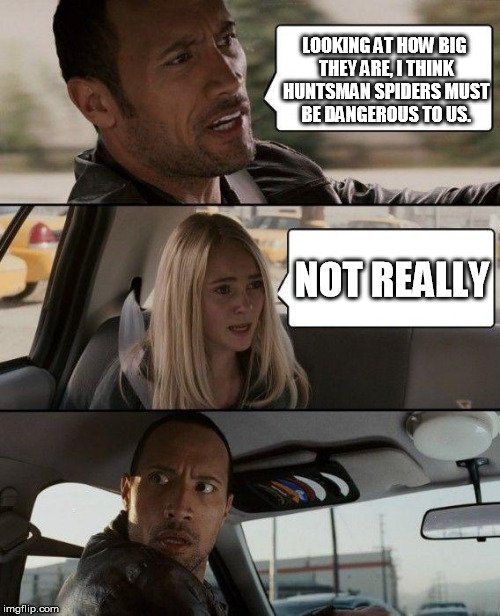A huntsman spider is a member of the Sparassidae family, which was formerly referred to as the Heteropodidae family. They are particularly well known for their giant size and their mode of hunting.
Huntsman Spider Facts
Most members of the family (i.e. the Sparassidae family) of the huntsman spider are commonly found in Australia and Asia, so it’s often called the Australian huntsman spider.
Australian huntsman spiders are known for being the hairy so-called ‘tarantulas’ on the walls of the house that are notorious for freaking people out by appearing and rapidly scuttling behind curtains.

(Photo Credit : Bryce McQuillan / Wikimedia Commons)
A huntsman spider is sometimes also referred to as the giant crab spider, due to its large size and appearance.
It is sometimes also called the banana spider, as it occasionally appears in marketed bananas. Furthermore, larger species are known as wood spiders, as they are commonly found in woody places, like mine shafts, woodpiles, forested areas etc.
Huntsman spiders are found in the US too, especially in subtropical areas of Florida, California and Texas. They are also found in coastal areas of Georgia and South Carolina.
Huntsman Spider Size
Huntsman spiders are known for their large size; they are big, long-legged spiders. Some male spiders of this species are so large that they achieve a leg span of 8-10 inches.
Huntsman spiders are generally grey or brown, and are sometimes found with banded legs. Many species of huntsman spiders have flattened bodies, possibly because they are adapted to live in narrow spaces, like in rock crevices and under loose bark.

Huntsman spiders can be seen sitting together under bark on dead trees and stumps, and in crevices of rock walls. (Photo Credit : JonRichfield / Wikimedia Commons)
A noteworthy thing about huntsman spiders is that their legs, instead of bending vertically with respect to their bodies, spread out forward and laterally in crab-like fashion, thanks to the twisted joints these spiders have.
What do huntsman spiders eat?
Huntsman spiders are actually quite useful for humans (especially in tropic regions) in that they are nocturnal critters and capture and feed on insect pests, such as cockroaches, silverfish and crickets.
As with other vagrant spiders, pantropical huntsman spiders do not deploy their webs to ensnare their prey; instead, they use their nimbleness and swiftness to capture their prey and then use their chelicerae (jaws) to feed on them. They also use their venom, which immobilizes the prey and assists in digestion.
Do huntsman spiders bite humans? Are they dangerous?
Yes, huntsman spiders do bite humans occasionally, but their bites are not known to be dangerous to humans (albeit they can be quite painful and have other side effects).
Despite their sheer size and somewhat scary appearance, huntsman spiders are not known to cause harm to humans, and therefore, are generally not considered dangerous.

The bite of a huntsman spider, however, can be fairly painful and result in local swelling. The effects of the bite vary depending on the species of spider; their bites can also cause headache, nausea, vomiting and irregular pulse rate.
It’s observed that huntsman spiders don’t usually bite humans in the first place, and it’s not clear what provokes Sparassidae to bite humans. However, it’s well known that female members of these species defend their egg sacs and offspring aggressively.
The rarity of their bites indicates that they don’t bother humans, and as such, their bites are mostly incidental or accidental, such as in circumstances when you carelessly handle a pantropical huntsman spider or when you accidentally trap it (say, in a shoe) (Source). Fortunately, bites from these species don’t generally require hospital treatment.